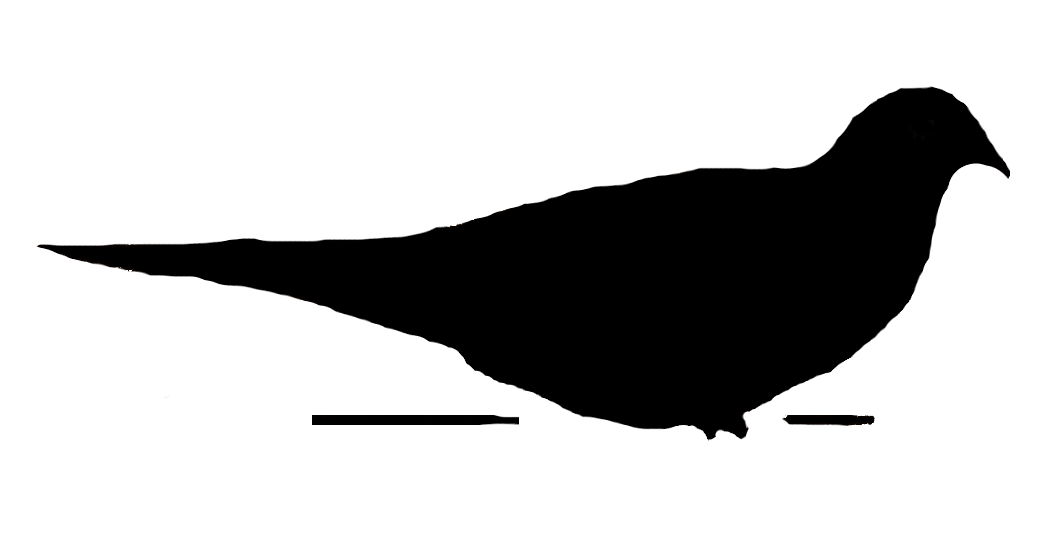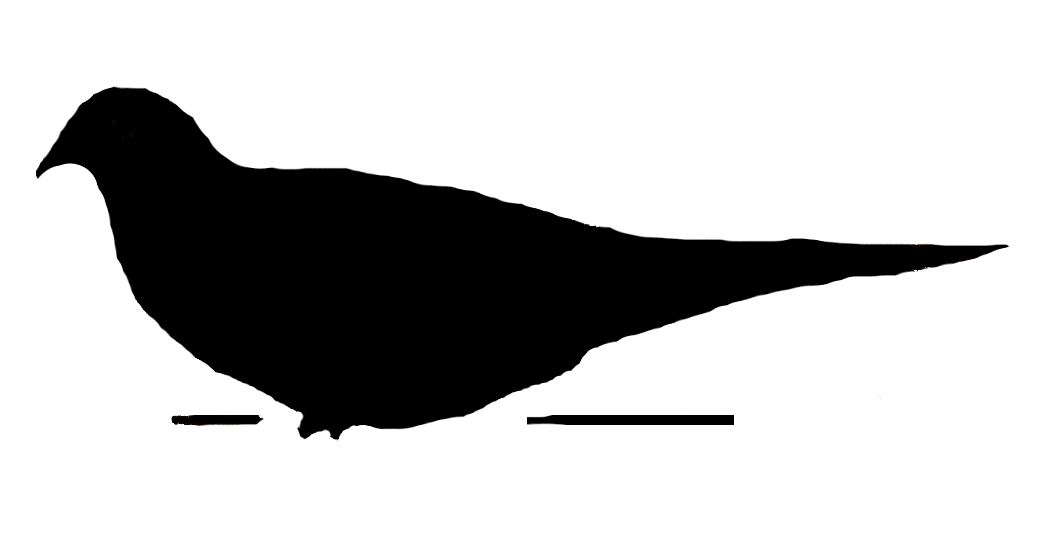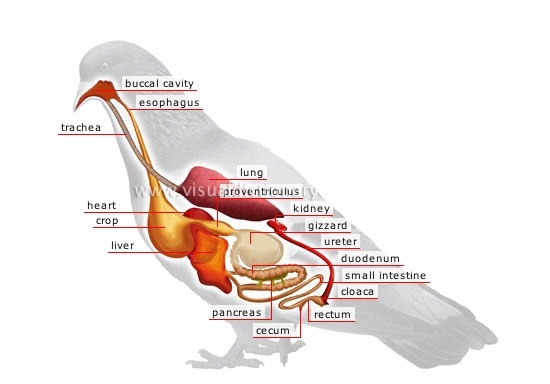|
 NOURISHMENT: FOOD, WATER & MORE NOURISHMENT: FOOD, WATER & MORE 
 FOOD FOOD 
Doves, like most birds, consume about 20% of their body weight... daily.
Doves can eat commercial seed mixes usually marketed for finches, canaries and cockatiels and wild song-bird mixes. But remember that doves do NOT hull (remove shells) from seeds such as sun-flower, they swallow whole seeds which are stored in their "crop" and digested, over time. (This is why proper "grit" is necessary, as it helps to grind the whole seeds in the crop.) When you feed "wild bird" seed that contains whole sun-flower seeds, peanuts, &c., you can "strain" the smaller seeds with an inexpensive colander or sieve. Sun-flower seeds are very beneficial to doves and are available hulled (shells removed), in many pet stores. Chopping these down (you can use a mortar and pestle or a small electric food grinder to grind them) to a smaller size is easy enough and will help to ensure proper nourishment.

Their most favourite seeds are White millet, Safflower and cracked corn. But worry not, they're quick to "sort through" what-ever mix you provide and the "rejects" will be freely tossed to the side.
In addition to the seed, leafy vegetables, broccoli, chopped apples, hard-boiled egg (yes, egg... even doves are known to eat the eggs of other birds in the wild, but for "home", hard-boil the eggs), cooked rice and, for needed protein (because although a dove's diet is predominantly seed, protein is necessary and sometimes even "craved"), you can add dehydrated mealworms, crushed, to the diet, either in a separate little dish or sprinkled on the bottom of the cage.
Though there are stats that say other-wise, "grit" and gravel (or coarse sand) is almost necessary with a dove's food. It helps grind the seeds as they're digested in the crop. If you put sand in the dove's cage, s/he will ingest some of this (so be sure it's clean, chemical- and disease-free). But commercially-available, high calcium/vitamin-enriched grit is available at most pet stores.
Vitamin D is especially important to doves (as is calcium and vitamin A). Vitamin D aids in the metabolism of calcium (for strong bones) and other cellular functions. Sun-light is the best "source" of vitamin D (in birds as well as in humans), so getting a dove in a place where there's sufficient UN-FILTRED sun-light (the necessary UV rays don't penetrate even the cleanest windows) can present a challenge. The best approach is to get the cage OUT of the house on sunny days, as temperatures permit. NOT in direct, beating, blazing sun, of course, because the goal is to allow the dove to "bask" comfortably, not "roast". Supplements are helpful but should not be the only source.
However... good sources of Vitamin D are the yolk of a large egg (hard-boiled) and broccoli is too.
When "serving" egg yolk, be sure it's freshly cooked, cooled and discard left-overs at the end of the day. Don't leave it over-night and don't re-serve. Once a week or even twice a week, crumble the yolk in a separate, small dish (the plastic top of spice jars, thoroughly washed and rinsed, is good for this), and monitor how much is eaten by end of day.
For broccoli, be sure it's fresh and CLEAN, "shave" the dark green tops into a separate dish and you'll see a definite appreciation. Be sure to discard any left-overs at the end of the day as they'll tend to go entirely too soft, be ignored and emit an unpleasant odour.
Cod liver oil, once weekly, is a great vitamin supplement (as well as added fat and oil, which helps with the digestive tract and other things). A good rule is:
1 ml cod liver oil/100g seed - 0.03oz oil/0.03oz seed
A common medicine dropper, available at most pharmacies/drug stores, is 1ml.
You can use a 500gm container of yoghurt (as I do) or any other similar container to measure 500gm of seed
Fill the container with seed (almost to the top, but remember that containers aren't filled to the brim when you buy a product, so your judgment is fine) and add 5 droppers of oil. I put a piece of plastic cling ("Saran") on the container, then the lid. Shake and "roll" to mix very thoroughly and allow the oil to soak into the seed over-night or for a day, at room temperature. (As I have the moment or think of it, I'll give the container a mix-and-shake-and-roll through the day.)
In the morning, serve this seed as you would any other in place of the regular seed. Removing all other seed will ensure the "oiled" seed is eaten. At the end of the day, just before "bed-time", discard any un-eaten seed.(You can put it out for the birds out-side. It's a treat for them!)
What-ever you have left in the container can be stored in the fridge for about 2 weeks, but shouldn't be saved longer. Any left-overs can be given to the birds out-side since there are more of them and it'll be consumed quickly, well before it goes "rancid".
Of course, if you have a smaller container or another way of measuring, you can use the formulary given, just adjust as necessary (1ml oil to 100gm seed).
Once weekly is fine, good enough. You don't want to over-do because too much cod liver oil (like too much of anything) could lead to complications.
After eating (filling their crop), a dove will "roost" (rest) for a while, as they digest their meal.
As a note: It's often suggested, recommended, and some will insist that food be "rationed", served at specific times, in specific quantities, in specific places. This isn't really necessary. Doves will eat when they're hungry, as much as they want/need, and will adjust to the circumstances. I tend to think of the "dog-cat comparison": one can leave a dish full of food for a cat and leave the house, the cat will eat when hungry and will eat until satisfied... with a dog, what-ever is put into the dish will be devoured immediately, no matter how much is there. Doves will tend more toward the "cat" approach, so, providing a full, small dish of food all day, every day, shouldn't be a concern (though, no doubt, there are exceptions and you'll have to keep an eye on things). Though seeds don't "spoil", think of whether or not you'd appreciate food that laid there over the course of some days and replace left-overs with fresh when possible.
• Cuttlebone - Common in most bird cages but keep in mind that they can have extremely sharp edges. In the wild, mourning doves maintain their beak by scratching about in sand and gravel, or on limbs, stones and other objects. It's a necessity for them, much as humans will file finger-nails. Domestic birds are accustomed to cuttle bones and, for the most part, are smaller than mourning doves. Cuttlebone is a great source of calcium. But be sure your cage is large enough so that, when the dove "takes flight", s/he won't injure him/herself. I tried clipping a cuttlebone to the side of Yonah's original house - 32x18x18 - and he had two "incidents" where he cut his wing when he took flight and it struck the sharp edge of the cuttlebone. I tried to put the cuttlebone on the floor of his house, but that proved to just get in his way and again, there was another incident. Providing a tray of clean sand (a cookie sheet is useful for this) with various sizes of "grit" has proven to be beneficial. (A little warning: doves love to "forage" and "toss" the sand about so you might want to put a "guard" around the lower inch or two of the cage. It won't completely avoid tossed sand on the floor, but it will help. You don't want to deny a dove it's natural instinct and this is just another part of the "responsibility" you're willing to take on.)
As a note: I eventually removed the cuttlebond completely. Yonah had no interest in it. But I have seen that they can be "ground" fine enough for a dove to swallow, and a small portion can be added to seed.
My personal list of foods that I mix together, that Yonah enjoys, and since he's in great health, must be good, are the following:
A "primary mixture is 500 grams of a 50/50 mix of...
• "Audubon Park® Songbird Blend" (I sift it to separate the un-hulled and larger seeds and use the rest, the smallest seeds, as a "base")
• "Healthy Select" Canary and Finch Diet
To this, I add approximately 150 grams each:
• "ZuPreem® Pure Fun" (Seeds, FruitBlend® Pellets, Vegetables and Fruit)
• "White Mill® "PURE" Canary and Finch Food
To the above mixture, I add approximately 4gm or one teaspoon, of each of the following:
• "Kaytee" Molting and Conditioning (Again, approximately 4gm or one teaspoon to 500gm of above mixture)
• "Kaytee" Sunflower Hearts & Chips (which I grind into MUCH smaller pieces)
• "Kaytee" Songbird Treat (Niger Flax, Canola, Sesame and Anise seed, Red and Yellow millet)
• In a separate, small dish (the cap of a small spice jar), "Kaytee High-Calcium Grit". Eventually, it will be "tossed" about the cage, but it's available at all times.
• Once weekly, I put about 4gm of "Fluker's Freeze-Dried Mealworms", crushed to "edible size" on the top of the seed in the food dish.
• * For "greens", you can actually "sprout" the smaller seeds in most "wild bird" seed mixes. In a small dish of plain "potting" soil, sprinkle some of the seeds on moist soil and keep it wet until they start to sprout, then water as necessary. The little dish (again, those small, plastic caps from spice jars work very well for this) can be kept in a corner of the cage until the sprouts wilt, which they will, in time, at which time they can be replaced with new sprouts. They may or may not be eaten, but making them available is easy enough, and they're fresh and you'll know they're clean and chemical-free. This doesn't work well with sun-flower seeds though. Also, the "heart" of romaine can be placed in a small jar of fresh water and placed in a corner, secured, so it doesn't spill when "pecked and pulled". A baby food jar is very good for this. Keep the water in the jar fresh and the romaine will last for quite a while. And the growing, natural greens add a touch of safe (see "Hazards") vegetation to the cage as well. *
* PLEASE NOTE THAT I DO NOT RECEIVE ANY REMUNERATION OF ANY SORT FROM THE LISTING OF BRAND NAMES. THESE ARE LISTED PURELY IN THE INTEREST OF THE READER AND BASED ON MY PERSONAL EXPERIENCE AND WHAT APPEARS TO BE YONAH'S PLEASURE AND GOOD HEALTH.*
And don't worry about offering something that isn't liked... Even in a mixture of different seeds, a dove will "sort through and pick out" what's liked... other seeds will be tossed.
 MOULTING MOULTING 
Doves, like all birds, will "moult"/"molt", shedding their feathers, from time-to-time. I find that Yonah tends to go through, what I call a "radical moult", twice a year.The downy (small, soft) feathers on his breast are usually the first to go and it's quite obvious because they settle almost every-where, from in-side his house and out onto the floor of his room. (They tend to “float” easily and will “stick” to clothing so they'll also make their way to other rooms about the house. You can't miss them.) This is accompanied by the shedding of the larger tail and wing feathers. At first, the sight of all these feathers can be shocking and concerning, but if general health is good, food and water are always fresh and clean and the house (cage, if you must) is properly cleaned and maintained and you have no reason to suspect illness, it's just “Nature” taking normal course. It's a “change of ward-robe”, as it were.
Feathers, though made of keratin, like hair and finger nails, don't continually grow. They grow to the “required” length and then stop. And when moulting-time arrives, the new feathers will begin to grow, the old feathers will loosen and drop. When the old feathers are gone, the new come along to replace them.
Be aware that moulting can be stressful to a dove (and any other bird) and proper nutrition at this time is EXTREMELY ESSENTIAL. (A little extra “Moulting Mix” in daily meals is recommended, as well as foods that are higher in calcium... egg yolks and broccoli for example.)
You might also notice that “mood and attitude” will change, as well as there might be less “vocalisation”. There might be less “playfulness”, and a bit less “affection”. During the days, “calls” and “conversations” might be noticeably less frequent. And Yonah tends to find a particular corner of his house where he spends much of a day, “resting”. He also has a place on a wall-shelf in his room, away from his house in the window, where he prefers to “hide” in any available nook that's big enough for him to settle in. (When he's in one of his “nooks”, amazingly, he tends to blend-in with most of the items around him. I've come to learn that this is a “normal” retreat and that, in the wild, moulting birds have been known to find a particular shrub or other “cover” and will stay there for a week or more, during the moult.)
Doves, and birds in general, are VULNERABLE as they moult. As wing and tail feathers drop, their ability to fly and their balance is altered. Like-wise, as body feathers are dropped and new feathers begin to grow, doves have less insulation against temperature changes. (And, since moulting usually happens in Spring and Autumn, this can be uncomfortable, to say the least. If your little one is in the house, adjusting the room temperature is in everybody's best interest. A bit of warmth, no matter the season, would be most appreciated, surely.) “Hiding” is only a natural instinct (as it would be for people as well) during this time. It's well-advised now, more than ever, to approach with consideration, to speak softly and keep gestures slow and “friendly”. Doves are, as they say, “skittish” by nature. Being so vulnerable at this time brings that out even more clearly.
Just keep in mind, this will pass, generally in a week or two, and then, with fresh, new plumage, all will be as if it never happened.
This is an excellent time to note the condition of the dropped feathers, to see where the “wear and tear” appear, how well they'd developed. And too, to look at the condition of the new feathers. Very much like finger and toe nails on people, feathers can tell quite a bit about a dove's health.
 WATER WATER 
Water serves more than one purpose but most important are hydration and digestion:
• Drinking: Because doves store their food in their crop where it's digested slowly, they need to have water to help with digestion. (Doves are unique in that they "siphon", suck water when they drink, similar to the way we use a straw. Other birds "dip", gathering water in their beak and mouth and let it trickle down their throats.)
• Humidity: Optimal humidity for a dove's environment is around 50%. Keep a separate dish of water in the room, close to the cage, especially during "heating season". If there's enough space that won't interfere with mobility, you could put a shallow dish of water, NO DEEPER THAN 2cm/1in, in a corner of the cage where the dove doesn't spend much time. Remember to keep that water fresh at all times because it might serve as a "drinking spot" as well.
• Bathing: The same dish you provide for humidity can double as a "bird bath" and will be greatly appreciated, especially on warm days. As stated previously, the water-level should be no deeper than 2cm/1in. The dish should be low enough for the dove to be able to get into and out of easily and at least large enough for him/her to sit in comfortably. A little note here: there WILL be splashing, so you might want to put the "bath" in a corner of the cage (preferably not under a perch because of "droppings") and put some sort of "protective barrier"... clear plastic shelf-liner is good for this... I've used a product called "Duck" brand, "Easy Liner Clear Classic", cut at a length enough to cover the corner by the length of the dish and about 8cm/2in above the height of the dish.
Change the "bath water" every morning at the very least, more often if there are "droppings" or "dirt" it. A dove will drink from this from time-to-time and ANY impurities could cause illness.
• Basic Rule of Water: If you wouldn't drink it, it shouldn't be in the cage.
|

